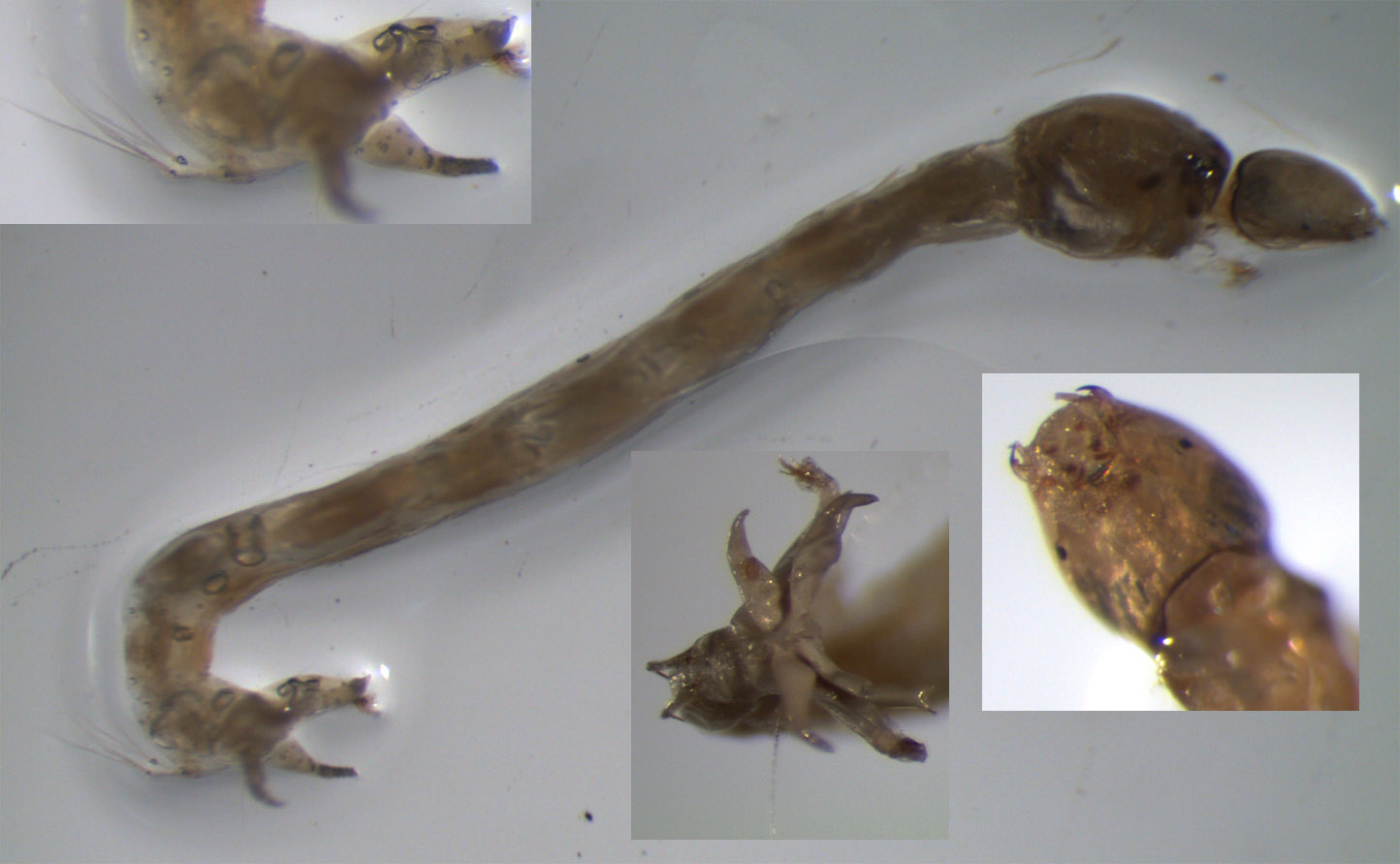Diptera.info :: Identification queries :: Diptera (eggs, larvae, pupae)
|
Chironomidae larva
|
|
| Cranefly |
Posted on 25-01-2010 12:09
|
|
Member Location: Shachovskaya Posts: 647 Joined: 17.09.08 |
I have never supposed Chironomidae to be so diverse. I attach one more larva, caught near Murmansk in pond. Body is compressed a little. Is it possible to determine the genus?
Cranefly attached the following image:  [170.83Kb] |
|
|
|
| Cranefly |
Posted on 25-01-2010 12:13
|
|
Member Location: Shachovskaya Posts: 647 Joined: 17.09.08 |
one of posterior tubercles bifurcates.
Edited by Cranefly on 25-01-2010 12:13 |
|
|
|
| atylotus |
Posted on 25-01-2010 12:55
|
|
Member Location: Amsterdam, NL Posts: 1172 Joined: 29.05.09 |
to me it seems like either a Procladius spec. or perhaps Psectrotanypus varius. I can't decide whether there are four or six anal tubulus, but the head sooms too large for a Tanypus spec. (which have 6 anal tubulus). Look closer for the lateral line of hairs on the abdominal segments. If there is a lateral line of hairs on the 8th abdominal segment (segment 1 is the segment just behind the thickened thorax) then it is NOT a Procladius. Also of diagnostic features is the so-called thoracic horn, present in pre-pupa, like this. If you have a detailed picture of the thorax in lateral view, you may see this as a brown tube or similar shape. I can't see this in the habitus photo. By the way, this is a typical representative of the subfamily Tanypodinae, a predatory subfamily with retractable antenna and a kidney-shaped eye. Edited by atylotus on 25-01-2010 12:56 |
|
|
|
| Cranefly |
Posted on 25-01-2010 17:47
|
|
Member Location: Shachovskaya Posts: 647 Joined: 17.09.08 |
Thank you. No lines of hairs. Chironomidae is too difficult group for me. I promise myself not to deal with it, but some of their larvae are really extraordinary beautiful. |
|
|
|
| atylotus |
Posted on 26-01-2010 10:04
|
|
Member Location: Amsterdam, NL Posts: 1172 Joined: 29.05.09 |
If there is no line of lateral hairs on the 8th segment than (with this kind of head) it must be Procladius spec. This genus cannot be identified to species level in the larval stage. |
|
|
|
| Cranefly |
Posted on 26-01-2010 10:43
|
|
Member Location: Shachovskaya Posts: 647 Joined: 17.09.08 |
Many thanks for your help |
|
|
|
| Jump to Forum: |












